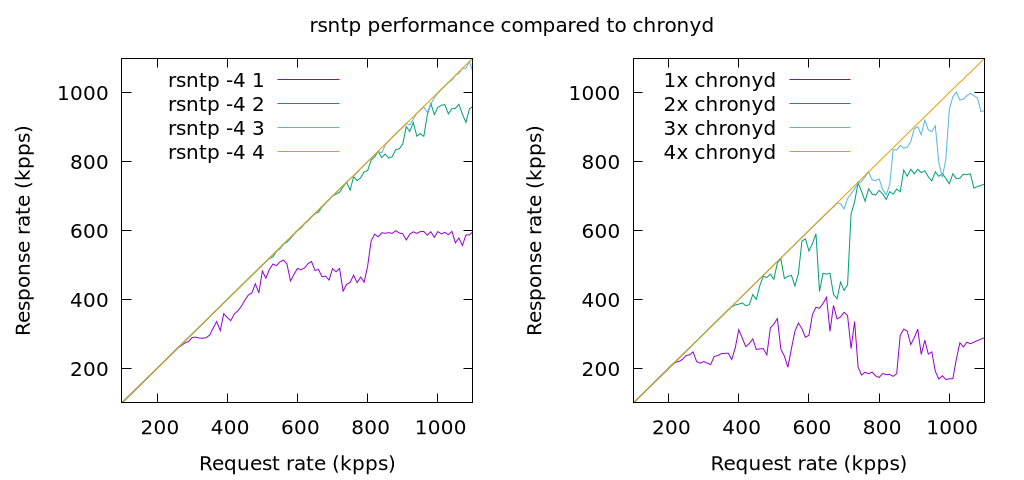rsntp is an experimental high-performance NTP server written in Rust. It does not implement a full NTP client and relies on another NTP client and server to be running on the system instead. It periodically updates its state to mirror the real NTP client/server and uses multiple threads to serve the current system time.
By default, rsntp uses one thread for IPv4 and another for IPv6. In order to get the best performance, it’s necessary to increase the number of threads using the --ipv4-threads and --ipv6-threads options to correspond to the number of CPU cores available on the system.
The real NTP client/server needs to be configured to listen on 127.0.0.1 on port 11123 (or another port if specified with the --server-addr option). For instance, the following configuration should work with chronyd:
allow 127.0.0.1 port 11123 bindaddress 127.0.0.1
The following graphs compare the rsntp performance with chronyd (version 4.1), as measured by ntpperf. The tests ran on a Linux machine with an Intel E5-1220 CPU (4 cores) and a 1Gb/s Intel I350 network card. The maximum rate of NTP requests and responses at the 1Gb/s speed is about 1100k per second.
The graphs show that with rsntp the server starts dropping packets at a higher rate than chronyd and its performance is more stable as the rate of requests is increasing. chronyd does not use multiple threads as a server. It needs to be started in multiple instances sharing the server port in order to utilize multiple CPU cores. It starts dropping packets at a lower rate and the response rate is jumping up and down as the request rate is changing. With both implementations 4 threads/instances are needed on this system to fully saturate the 1Gb/s link without any packets dropped, but rsntp with 3 threads is very close to it.
